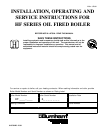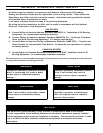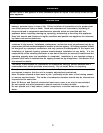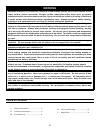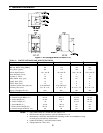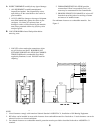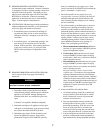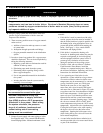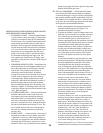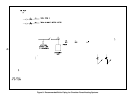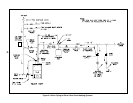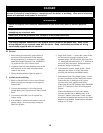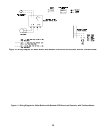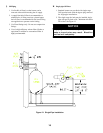
7
C. PROVIDE AIR SUPPLY AND VENTILATION to
accommodate proper combustion. If natural ventilation
is inadequate, provide a screened opening or duct from
the boiler room to the outside. The opening or duct
must be sized so the boiler input will not exceed 4,000
BTUH/Sq. In. of free area. If other air consuming
appliances are near the boiler, the air inlet should be
larger. Consult respective manufacturers.
D. VENTILATION AIR must be provided to maintain the
ambient temperature at safe limits. Local and national
codes may apply and should be referenced.
1. In unconfined spaces (basement) in buildings of
conventional frame, brick, or stone construction,
infiltration normally is adequate to provide air for
ventilation.
2. In confined spaces, two permanent openings, one
near the top of the enclosure and one near the
bottom, shall be provided. Each opening shall have
a free area of not less than 1 sq. inch per 1000
BTUH of the total input of all appliances in the
space.
E. PROVIDE COMBUSTION AND VENTILATION AIR.
Local code provisions may apply and should be
referenced.
WARNING
Adequate combustion and ventilation air must be
provided to assure proper combustion.
1. Determine volume of space (boiler room). Rooms
communicating directly with the space in which the
appliances are installed, through openings not
furnished with doors, are considered a part of the
space.
Volume(ft
3
) = Length(ft) x Width(ft) x Height(ft)
2. Determine total input of all appliances in the space.
Add inputs of all appliances in the space and round
the result to the nearest 1000 BTU per hour.
3. Determine type of space. Divide Volume by total
input of all appliances in space. If the result is
greater than or equal to 50 ft
3
/1000 BTU per hour,
then it is considered an unconfined space. If the
result is less than 50 ft
3
/1000 BTU per hour then the
space is considered a confined space.
4. For boiler located in an unconfined space of a
conventionally constructed building, the fresh air
infiltration through cracks around windows and
doors normally provides adequate air for combus-
tion and ventilation.
5. For boiler located in a confined space or an uncon-
fined space in a building of unusually tight con-
struction, provide outdoor air with the use of two
permanent openings which communicate directly or
by duct with the outdoors or spaces (crawl or attic)
freely communicating with the outdoors. Locate one
opening within 12 inches of top of space. Locate
remaining opening within 12 inches of bottom of
space. Minimum dimension of air opening is 3
inches. Size each opening per following:
a. Direct communication with outdoors. Minimum
free area of 1 square inch per 4,000 BTU per hour
input of all equipment in space.
b. Vertical ducts. Minimum free area of 1 square
inch per 4,000 BTU per hour input of all equip-
ment in space. Duct cross-sectional area shall be
same as opening free area.
c. Horizontal ducts. Minimum free area of 1 square
inch per 2,000 BTU per hour input of all equip-
ment in space. Duct cross-sectional area shall be
same as opening free area.
Alternate method for boiler located within
confined space. Use indoor air if two permanent
openings communicate directly with additional
space(s) of sufficient volume such that combined
volume of all spaces meet criteria for unconfined
space. Size each opening for minimum free area of
1 square inch per 1,000 BTU per hour input of all
equipment in spaces, but not less than 100
square inches.
6. Louvers and Grilles of Ventilation Ducts
a. All outside openings should be screened and
louvered. Screens used should not be smaller
than 1/4 inch mesh. Louvers will prevent the
entrance of rain and snow.
b. Free area requirements need to consider the
blocking effect of louvers, grilles, or screens
protecting the openings. If the free area of the
louver or grille is not known, assume wood
louvers have 20-25 percent free area and metal
louvers and grilles have 60-75 percent free area.
c. Louvers and grilles must be fixed in the open
position, or interlocked with the equipment to
open automatically during equipment operation.



